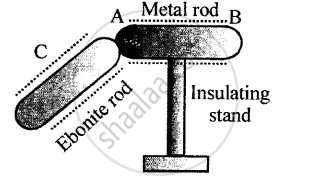Advertisements
Advertisements
Question
What do you mean by conservation of charges?
Solution
According to the Law of conservation of charge
“When two different bodies are rubbed together, both bodies get charged equally but with charges of the opposite kind.” Thus, the total charge of two bodies before and after rubbing remains the same.
Example: When an ebonite rod is rubbed with fur, the electrons from the fur are transferred to the ebonite rod and therefore the ebonite rod becomes negatively charged (due to gain of electrons), while the fur becomes equally positively charged (due to deficit of a same number of electrons). As the same no. of electrons are, exchanged by the ebonite rod and fur, the magnitude of charges main same but with opposite sign.
APPEARS IN
RELATED QUESTIONS
When an ebonite rod is rubbed with fur, the electrons move from ebonite to fur.
When a comb is rubbed with dry hair both comb and paper get similarly charged.
To find whether a body is charged or not, an uncharged electroscope is used.
What are the two kinds of charges?
What are free electrons?
Describe the method of charging a conductor by induction.
Figure below shows a metal rod AB placed on an insulating stand.
In figure (a) a negatively charged ebonite rod C is touched with the metal rod AB, while in figure (b), the negatively charged ebonite rod C is held near the rod AB. State the kind of charges at the ends A and B of the rod, in each case.

How will you use a gold leaf electroscope to find out whether a body is charged or uncharged?
A negatively charged ebonite rod is touched with the disc of a negatively charged gold leaf electroscope. What will be your observation?
What are the characteristics of a static electric charge?
